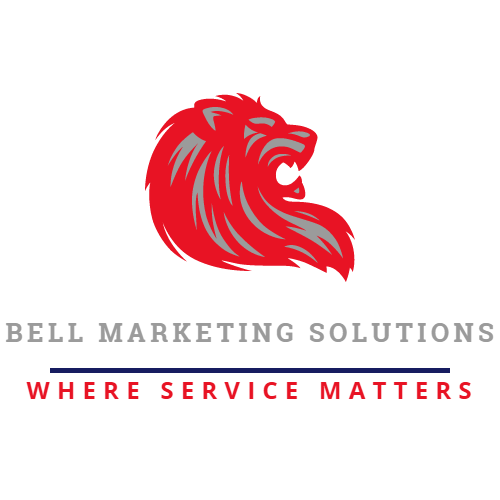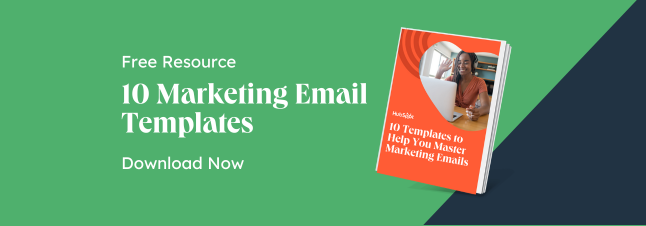I recently ordered a swimsuit online to get ready for a beach vacation. Choosing between hundreds of swimsuit styles after months in sweats is overwhelming, so I breathed an audible sigh of relief when I saw the order confirmation in my inbox.
I recently ordered a swimsuit online to get ready for a beach vacation. Choosing between hundreds of swimsuit styles after months in sweats is overwhelming, so I breathed an audible sigh of relief when I saw the order confirmation in my inbox.
I could almost smell the ocean and feel the sand under my feet in that moment.
That “shopping high” is a feeling of instant gratification and anticipation after an order. You can leverage this valuable window to boost customer loyalty and retention as a brand. To achieve this, you need the post-purchase email.
- How Post-Purchase Emails Drive Customer Retention
- The Best Post-Purchase Emails
- Best Practices for Post-Purchase Emails
How Post-Purchase Emails Drive Customer Retention
In the retail and e-commerce industry, email drives a whopping 45x ROI. Angie Jones, fractional CMO and author of the e-commerce newsletter The Brand Love Brigade explains why post-purchase emails are a powerful tool for customer retention.
“I’ve seen that the impact for brands who nail post-purchase campaigns is a higher retention rate and, ultimately, higher customer lifetime value (LTV),” Jones says. “The toughest leap to make is from the first order to the second, and post-purchase campaigns help do that.”
The Best Post-Purchase Emails
Ready to build on the brand momentum you’ve already built? Read on for my favorite post-purchase emails, why they work, and how to make them your own.
Order Confirmation (Man Crates)
First and foremost, your customer needs to know that their order is correct and has been received. Share the critical order details with your customer before anything else in an order confirmation email.
What we like: The celebratory image and saucy copy are exactly on-brand for Man Crates. However, it’s the icon progression that makes this order confirmation effective. Customers can tell from a glance where their order is in the process.
Below this, Man Crates follows a best practice of including the order and customer service contact details.
Shipping Confirmation (Etsy)
The following critical information you should share is a shipping confirmation when the package arrives.
What we like: I like how clean and effective Etsy’s shipping confirmation email is. The content is conversational and clear, reminding me of what I ordered with photos of my en-route items.
Etsy also uses valuable one-click order tracking to see where my package is — no copy/pasting a tracking number into a separate website.
Onboarding (Audible)
If a customer doesn’t understand a product or doesn’t use it, they’re unlikely to continue paying for it. Boost product engagement and customer retention with an onboarding email sequence.
What we like: Audible gives step-by-step, scannable instructions to help new subscribers use the app for the first time and discover content.
Technical Onboarding (Descript)
Onboarding is critical when you sell a complex or technical product like software. Set up onboarding sequences that guide your customers through adoption and offer support.
What we like: This onboarding email from podcast and video editing software Descript is a perfect example of an accessible way to help new users adopt the product.
Note the friendly design, five steps, video tutorials, and the invitation to join Descript’s user community.
Cross-Selling (Uncommon Goods)
Cross-selling is a common commerce strategy recommending similar or complementary products to recent customers.
This can be very effective since previous buyers already have experience with you and are more likely to buy again. Cross-selling can occur in a separate email or beneath your order confirmation (always place your order details first!).
What we like: This “You might also like” section from Uncommon Goods came in my order confirmation beneath my order details. The original order contained puzzles and games, so this recommendation tracks perfectly.
As a bonus, the email features other brand messaging, like their sustainability initiatives.
Loyalty Programs (Nani)
A loyalty or rewards program is the best way to build a loyal audience. Enrolling customers means you’ll have more data to analyze and can drive more orders by sending exclusive emails and incentives. But how do you convince them to join?
What we like: This rewards program email from Nani starts with gratitude and shares why you should sign up, with incentives like 100 reward points and exclusive offers.
The design pops, and the CTA is engaging (“Start Earning” versus “Sign Up”).
Benefits Reminder (Kohl’s)
It costs five times as much to acquire a new customer than to retain an existing one. That’s why you should work hard to build loyalty programs and show your members some love.
This can include sending special offers and promotions, but it should also include value-added content and fostering a sense of belonging.
What we like: Kohl’s is famous for its rewards program. This benefits email reminds members of the value they have access to for free, which builds brand loyalty and nudges them to return soon.
Giving a Return Incentive (Live Nation)
You can boost your LTV by giving customers a reason to wander back in (or visit your site). If you’re like me, the language you respond to best is money. Try either a discount, in-store credit, or extra loyalty points to encourage another visit.
What we like: Last year, I saw one of my favorite bands in concert. It was a great evening, and a few days later, this email with $20 concert cash landed in my inbox.
Concerts aren’t cheap, so I happily flagged this email in my inbox as I scoped out my next concert.
Upsell (Audible)
Once you have a happy customer, your next goal is to increase their CLV. A great way to do this is to offer an upgrade, also known as an upsell, from the product they’re currently using.
What we like: Audible’s upsell email is a master class in email design and messaging. First, it’s all focused on the value to the user (cost savings, access bestsellers, etc.).
Next, the comparison chart layout makes it easy to see the differences at a glance. With an enticing CTA above the fold and the promise of “Cancel anytime,” I think it’s a slam dunk.
Order Pickup (Target)
When an item isn’t being shipped, you might need to send pickup instructions. Don’t underestimate this step — it’s all a part of your user experience.
What we like: Bullseye will bring a smile to my face any day, but what has me smiling more is the clear steps on how to pick up my order and links to click if I need to extend my pickup window or contact the store.
Refer a Friend (MeUndies)
After a purchase, you want to give your customers a reason to share about it with their friends. A referral program is one way to incentivize your new customers to spread the word.
What we like: This referral email from MeUndies is fun and kaleidoscopic. There’s an incentive for both the referrer and their friend — driving the customer back to a return purchase.
Survey Request (Warby Parker)
One big reason you may want to send a post-purchase email is to collect feedback. This helps you improve, and it also helps you follow up with customers who may be less than satisfied.
I personally don’t like clicking through to a survey when I have no idea how long it’s going to be, so short post-purchase email surveys are best.
What we like: This Net Promoter Score® survey from Warby Parker is short (just one question) and shows respect for the customer’s time and opinion.
Survey Incentive (Express)
If you need more extensive feedback, consider offering your customer an incentive to participate. Offer a freebie, a worthwhile discount, or a charitable donation in exchange for their feedback.
What we like: Express’s survey email is bold and visual and focuses on the benefit to the consumer.
Asking for a Review (World Market)
Reviews can drive future sales and give you valuable insights into your product lines. But what’s the best way to prompt reviews without pestering customers?
What we like: It’s easy. It’s helpful. It’s fun. Rather than a generic ask, this World Market email shows me photos of every item in my recent purchase.
That visual evokes an emotional response (Yes, I loved that sesame seed shaker!), and I’m more likely to leave a review.
Buying Again (Starbucks)
Not only should you prompt people to return, but you can prompt them to buy the exact same item they’ve purchased before.
If you sell a skincare product and know that the average purchase frequency is every two months, for example, then you can prompt them to stock up when they’re running out.
With products like food and beverage, you can incentivize return purchases, building regular habits.
What we like: If you’re a Starbucks lover like me, you’re likely used to emails like this one. Not only are these post-purchase emails effective because they gamify earning points, but they’re personalized.
Customers are 80% more likely to buy from a personalized experience, so lean into personalization. You have the data. You just need to leverage it the right way.
Best Practices for Post-Purchase Emails
As many ways as there are to engage customers after a purchase, there are even more ways to frustrate your customers when you get it wrong. Find the balance between overwhelming them and adding value with these tips.
- Make the critical information easy to find. Keep order details, dates, and tracking codes at the top of emails, not buried in text.
- Get the timing right. Don’t send a review or survey request before an item has arrived or before the person has had a chance to use the product.
- Don’t ask for the next sale too soon. Focus on product adoption and brand loyalty before asking for another purchase.
- Test, test, and test again. Use A/B testing to find the right messaging and timing.
- Use automation for success. Use an email marketing hub with a CRM like HubSpot to automate customer journeys and email sequences based on customer actions.
Getting Started
Want to inspire that shopping high in customers? When you get post-purchase emails right, you turn that shopping high into long-lasting brand loyalty. You can build an audience of loyal brand advocates who return to buy again and again.
![]()



![Download Now: 10 Templates to Master Marketing Emails [Free Kit]](https://no-cache.hubspot.com/cta/default/53/3def1e70-dcc7-436e-bffb-73211bd749f5.png)
